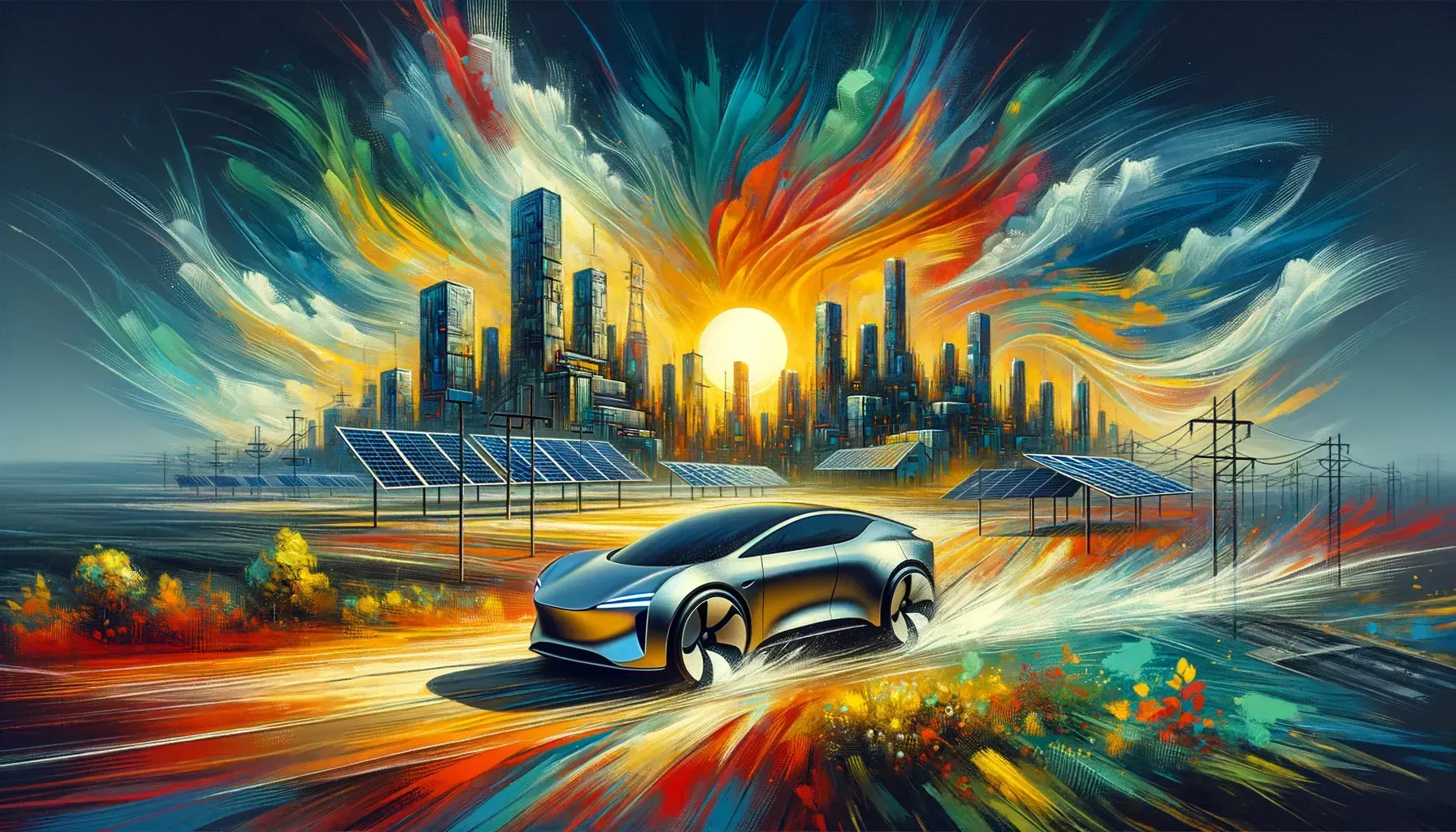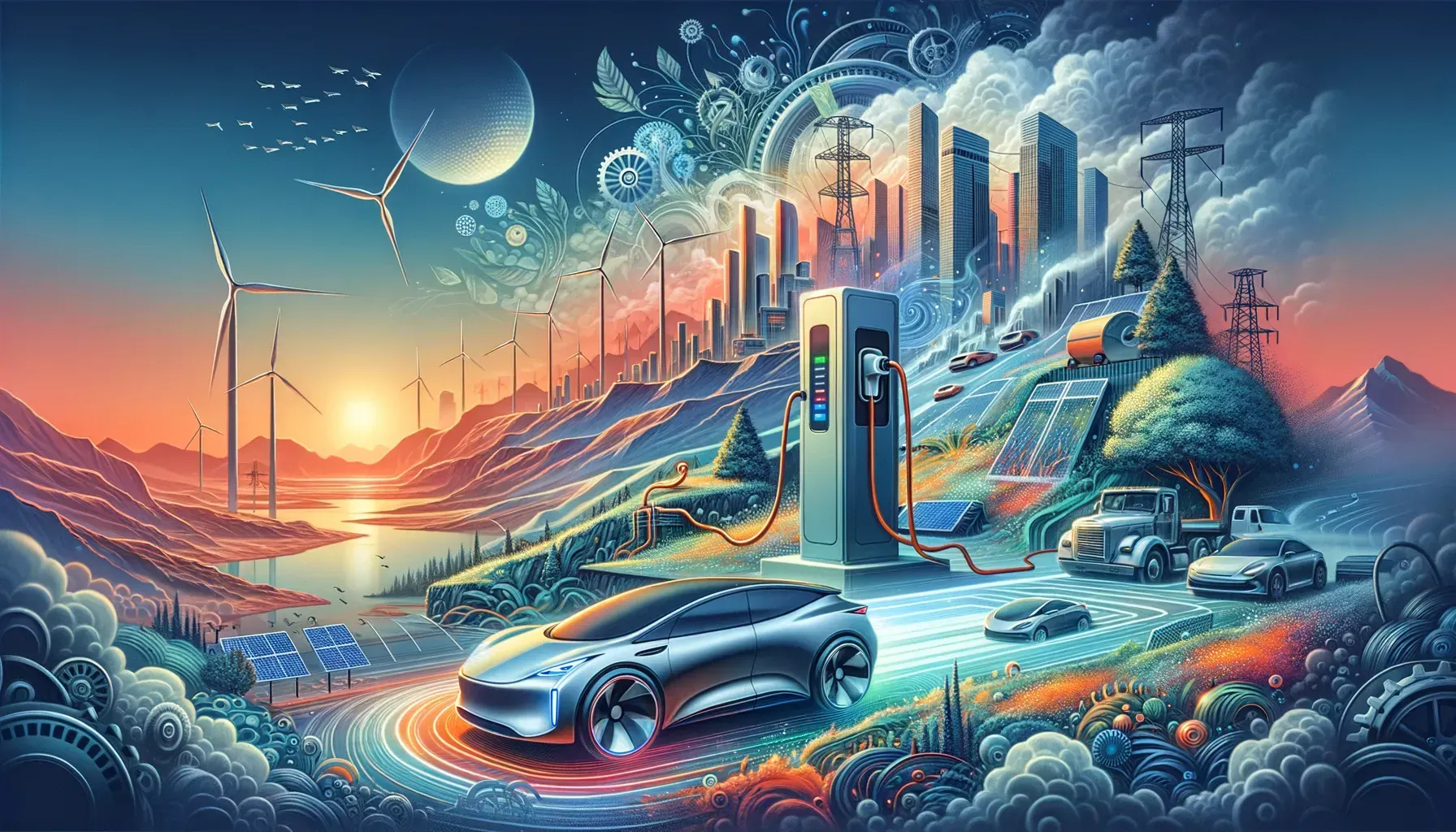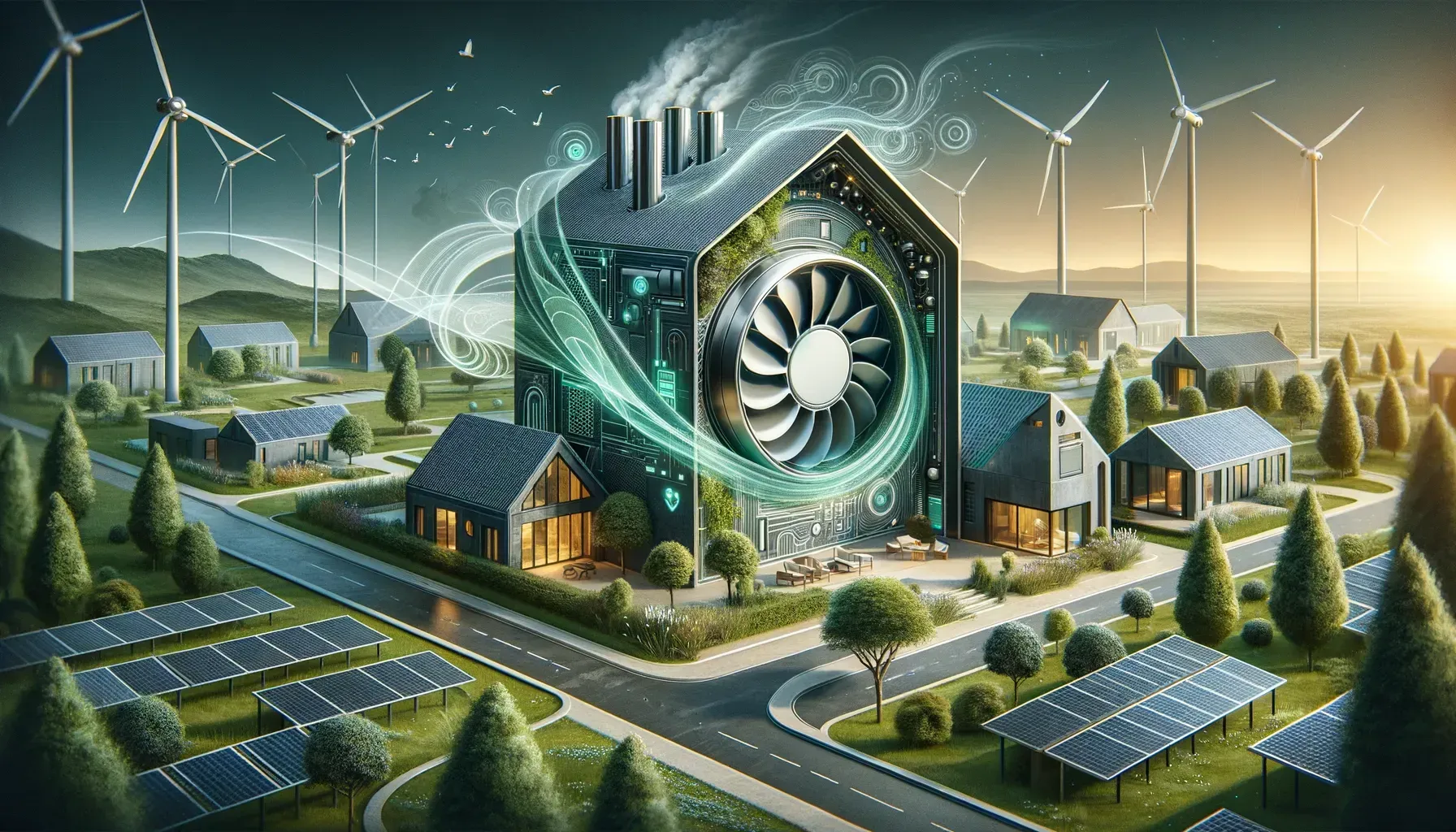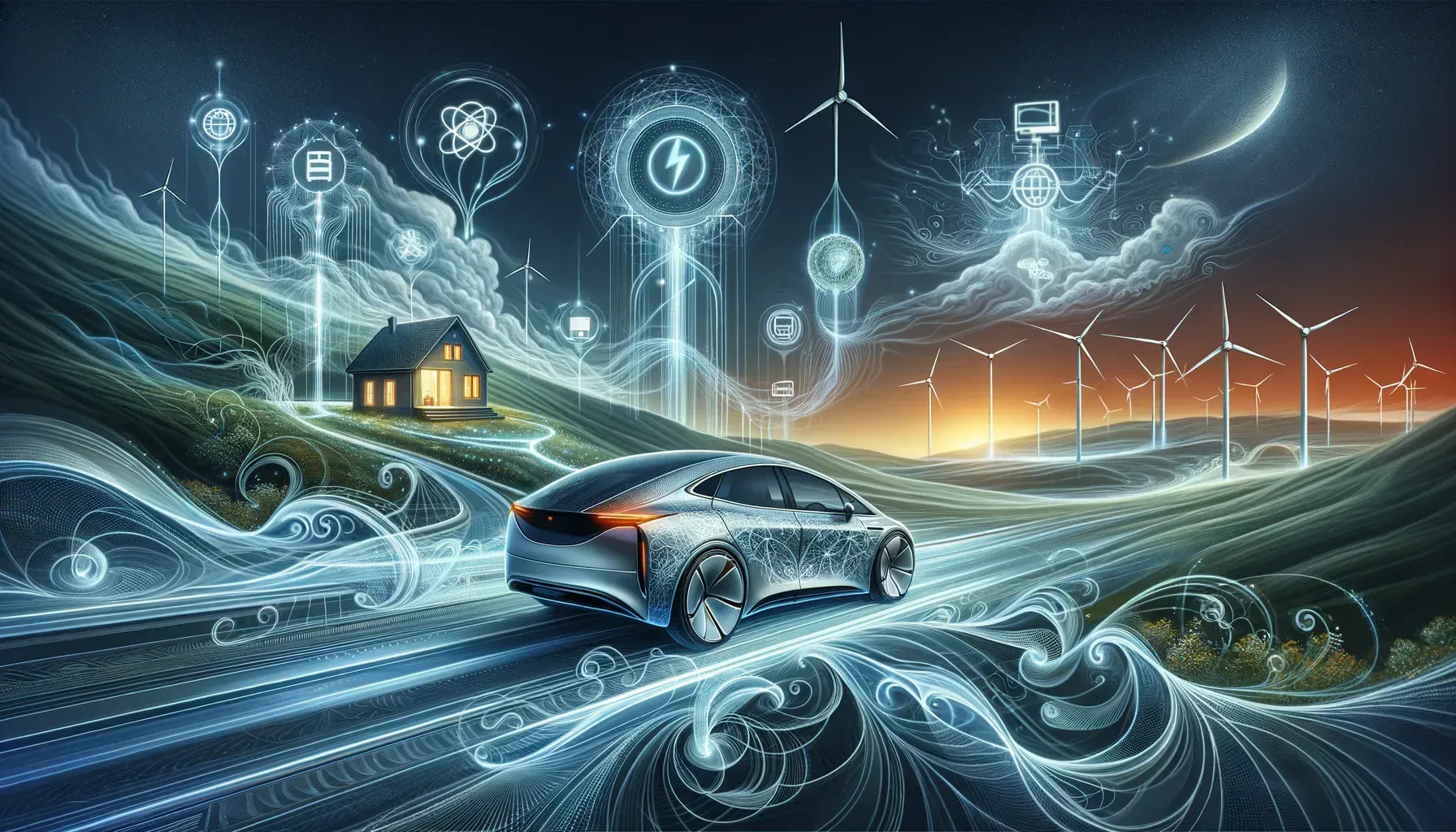From 0 to 100: The Quiet Revolution of Lithium–Sulfur Batteries for Fast-Charging EVs

Picture yourself on a rainy afternoon, rushing to a meeting, only for your electric vehicle's low-battery light to start blinking—panic! Normally, you’d map out a half-hour detour for a 'quick' charge. But what if, by the time you grabbed a coffee, you could return to a fully charged car? That vision is edging closer, thanks to the latest lithium–sulfur battery research, which promises fast charging times that could upend EV habits—as well as the entire battery industry.
Lithium–Sulfur Batteries: Charging Ahead of the Curve
The electric vehicle (EV) landscape is on the verge of a major transformation, thanks to recent breakthroughs in lithium–sulfur battery technology. A 2025 review led by researchers at Kiel University has outlined a promising roadmap for fast-charging lithium–sulfur (Li–S) batteries, potentially allowing EVs to charge in as little as 12 minutes. This leap forward could dramatically reduce charging times, improve energy density, and address both cost and ethical concerns tied to traditional lithium-ion batteries.
Fast Charging: From Hours to Minutes
One of the most significant frustrations for EV owners today is the time required to recharge. Even the fastest public chargers typically take between 15 and 60 minutes to reach 80% capacity. The new research suggests that lithium–sulfur batteries could slash this time to just 12 minutes for a full charge. As lead author Jakob Offermann notes:
"Our analysis shows that fast charging times of less than 30 minutes, and in some cases under 15 minutes, are realistic, while simultaneously increasing capacity."
If realized, this would make charging an EV as quick and convenient as a short coffee break, potentially eliminating range anxiety and making electric vehicles more appealing to a wider audience.
Energy Density Improvements: 10x the Power
At the heart of this breakthrough is the unique chemistry of lithium–sulfur batteries. Unlike conventional lithium-ion cells, which rely on cobalt and nickel, Li–S batteries use a sulfur cathode material paired with a lithium metal anode . This combination is not only more sustainable but also offers a theoretical energy density of up to 2,600 Wh/kg —about ten times higher than today's best lithium-ion batteries.
- Current lithium-ion batteries: ~250 Wh/kg
- Lithium–sulfur batteries (theoretical): up to 2,600 Wh/kg
This dramatic increase in energy density means that future EVs could travel much farther on a single charge, reducing the need for frequent stops and making long-distance electric travel more practical than ever before.
Abundant, Ethical, and Cost-Effective Materials
Another key advantage of lithium–sulfur technology is its reliance on sulfur—a material that is abundant, inexpensive, and far less ethically problematic than cobalt or nickel. Mining for cobalt and nickel has been linked to environmental damage and human rights concerns, while sulfur is a byproduct of industrial processes and is widely available.
- Sulfur: Abundant and low-cost
- Cobalt/Nickel: Expensive, limited supply, ethical concerns
By replacing these heavy metals with sulfur, lithium–sulfur batteries promise a cleaner and more sustainable supply chain, potentially lowering the cost of EV batteries and making electric vehicles more accessible.
Technical Innovations: Overcoming Challenges
Despite their promise, lithium–sulfur batteries have faced several technical hurdles on the path to commercialization. Sulfur, for instance, is a poor electrical conductor. To address this, researchers are combining sulfur with advanced materials like graphene and carbon nanotubes to improve conductivity and enable high charging rates.
Other challenges include the so-called "shuttle effect," where polysulfide compounds migrate within the battery, causing energy loss and reduced lifespan. Scientists are developing new battery separators and denser electrolytes to contain these compounds and stabilize performance.
Another issue is the formation of dendrites—needle-like structures that can grow on the lithium metal anode, potentially causing short circuits or fires. Protective coatings and 3D-engineered anodes are being explored to prevent dendrite formation and ensure safety during fast charging.
Prototype Progress and Real-World Potential
Early prototypes of lithium–sulfur batteries are already demonstrating impressive results, achieving energy densities of 2 milliamp-hours per square centimeter . While further improvements in material loading and structural integration are needed for commercial viability, the progress is undeniable.
The combination of fast charging , high energy density , and sustainable materials positions lithium–sulfur batteries as a leading candidate for the next generation of EVs. As research continues, the dream of charging an electric car in the time it takes to grab a snack is quickly becoming a reality.

The Chemistry Unpacked: From Polysulfide Troubles to Promising Prototypes
Lithium sulphur batteries have long been hailed as the next leap forward for electric vehicle (EV) technology, promising faster charging, higher energy density, and a cleaner supply chain compared to conventional lithium-ion batteries. However, the journey from lab to road has been anything but straightforward. The chemistry at the heart of these batteries presents unique challenges—most notably, the notorious polysulfide shuttle effect and dendrite formation. Overcoming these issues is essential for realizing practical, long-life lithium sulphur batteries that can power the fast-charging EV revolution.
Key Challenges: Sulfur’s Conductivity, Polysulfide Shuttle, and Dendrites
- Low Sulfur Conductivity: Sulfur, while abundant and lightweight, is a poor conductor of electricity. This limits the battery’s ability to deliver power quickly and efficiently.
- Polysulfide Shuttle Effect: During charging and discharging, lithium sulphur batteries generate polysulfide compounds. These can migrate between the cathode and anode, causing energy loss, rapid capacity fade, and shortened battery lifespan.
- Dendrite Formation: The lithium-metal anode, a key to high energy density, is prone to growing needle-like structures called dendrites. These can pierce the battery separator, leading to short circuits or even fires—major safety concerns for any EV application.
Innovative Chemistry: Graphene, Carbon Nanotubes, and Additives
To address sulfur’s low conductivity, researchers are integrating advanced materials like graphene and carbon nanotubes into the cathode structure. These materials create a conductive network, allowing electrons to move more freely and boosting the battery’s overall performance. The use of graphite carbon nanotubes, in particular, has shown promise in enhancing both conductivity and mechanical stability.
Stabilizing the battery’s internal reactions is another critical focus. Scientists are experimenting with a variety of additives—such as metal oxides and specialized catalysts—to control the chemical environment inside the cell. These additives help suppress unwanted side reactions and improve the stability of the sulfur cathode, directly addressing issues related to the polysulfide shuttle.
Smart Solutions: Separators, Electrolytes, and Protective Coatings
- Advanced Battery Separators: New separator materials are being developed to physically block polysulfides from migrating between the electrodes. This helps maintain battery capacity and extends lifespan.
- Denser Electrolytes: By engineering electrolytes that are more viscous or chemically interactive, researchers can trap polysulfides and prevent them from shuttling, further reducing energy loss.
- Protective Coatings and 3D-Engineered Anodes: To combat dendrite formation, teams are applying protective coatings to the lithium-metal anode and exploring 3D-structured anode designs. These innovations help distribute lithium more evenly during charging, reducing the risk of dangerous dendrite growth.
Prototype Progress: Energy Density and Lifespan Improvements
Early lithium sulphur battery prototypes are already demonstrating significant progress. According to a recent study, energy densities have reached 2 milliamp-hours per square centimeter —a promising figure that could translate to much longer driving ranges for EVs. More importantly, these prototypes are achieving fast charging times of under 15 minutes in some cases, a dramatic improvement over current lithium-ion technology.
Despite these advances, researchers acknowledge that more work is needed. As Jakob Offermann, lead author of a recent breakthrough study, explains:
"Making this technology safe and reliable long-term requires further improvements in material loading and structural integration."
This highlights the ongoing effort to balance high performance with safety and durability—especially as the industry pushes for batteries that can withstand thousands of charge cycles without significant degradation.
Looking Ahead: Toward Mass-Market Adoption
The technical barriers to widespread lithium sulphur battery adoption are gradually being overcome through inventive chemistry and engineering. By addressing the polysulfide shuttle and dendrite formation—two of the biggest hurdles for battery lifespan and safety—researchers are laying the groundwork for a new generation of EV batteries. The integration of graphene, carbon nanotubes, and protective approaches like 3D-engineered anodes is bringing the promise of fast-charging, long-lasting, and safer lithium sulphur batteries closer to reality.

Beyond Speed: Clean Supply Chains and a New Attitude to Range Anxiety
The promise of lithium–sulfur (Li–S) batteries goes far beyond the headline-grabbing speed of a 12-minute full charge. At the heart of this breakthrough is a fundamental shift in how electric vehicle (EV) batteries are produced, sourced, and perceived. Sulfur’s abundance and accessibility offer a path to lower production costs, cleaner supply chains, and a new era of confidence for drivers who have long worried about range anxiety.
Today’s lithium-ion batteries rely heavily on metals like cobalt and nickel—elements that are not only expensive but also raise serious ethical and environmental concerns. Mining these materials often involves complex global supply chains, questionable labor practices, and significant ecological impact. In contrast, sulfur is a low-cost material that is widely available, lighter, and safer to handle. As a result, Li–S batteries could dramatically reduce production costs, with industry estimates suggesting pack costs could fall below $65 per kilowatt-hour. This is a crucial step toward making EVs more affordable and accessible to the mass market.
The shift to sulfur-based chemistries also means a cleaner supply chain. By eliminating the need for heavy, critical minerals, manufacturers can reduce their reliance on regions with unstable or controversial mining practices. As one industry expert notes,
"Cost, weight reduction, and elimination of heavy critical minerals are key commercial arguments for Li–S adoption."This transition not only lowers costs but also aligns with growing consumer and regulatory demands for ethical sourcing and sustainability. For automakers, a cleaner supply chain is more than a marketing point—it’s a strategic advantage in an increasingly scrutinized industry.
Safety is another area where Li–S batteries could make a significant impact. Traditional lithium-ion cells are prone to overheating and, in rare cases, fires. The sulfur cathode and lithium-metal anode combination in Li–S batteries, when paired with advanced materials like graphene and carbon nanotubes, offers improved thermal stability. Researchers are actively addressing challenges like the "shuttle effect" and dendrite formation, which have historically limited the commercial viability of Li–S technology. Early prototypes are already demonstrating higher energy densities and enhanced safety profiles, suggesting that fires and overheating could become even rarer as the technology matures.
Perhaps the most transformative aspect of Li–S batteries is their potential to reshape public attitudes toward EV range anxiety. Fast-charging capabilities—realistically under 15 minutes, according to recent studies—mean that drivers could recharge their vehicles in less time than it takes to grab a coffee. This convenience, combined with the promise of longer driving ranges, could finally put range anxiety in the past. As charging becomes faster and more predictable, the daily routines of EV owners will change. Quick top-ups at home, work, or public stations will become the norm, making electric cars a more practical choice for a wider range of drivers.
The implications for mass production are significant. Sulfur’s scalability and low cost mean that Li–S batteries could be manufactured at a much larger scale than their lithium-ion predecessors. Market analysts forecast a Li–S battery market value of over $1.3 billion by 2035, reflecting both industry optimism and the growing demand for cleaner, more affordable EVs. As production ramps up through the late 2020s and into the 2030s, economies of scale are expected to drive costs even lower, accelerating adoption and making electric mobility mainstream.
Beyond the vehicles themselves, Li–S technology could integrate seamlessly with renewable energy sources like solar panels, enabling drivers to power their cars directly from their rooftops. This synergy between clean energy generation and storage further enhances the environmental benefits of electric transportation.
In conclusion, the lithium–sulfur battery revolution is about more than just speed. It’s about building cleaner supply chains, lowering production costs, and eliminating the barriers that have held back widespread EV adoption. As these batteries move from the lab to the production line, they promise to redefine what’s possible for electric vehicles—and for the drivers who rely on them every day.
TL;DR: Lithium–sulfur batteries could soon make charging electric vehicles faster and more convenient than your daily coffee run, while also slashing costs and boosting driving range.











